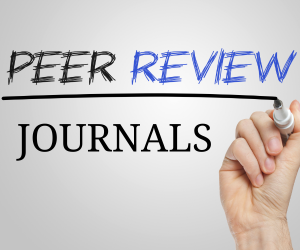SKRINING PENYAKIT JANTUNG REMATIK PADA ANAK: EVALUASI BERDASARKAN PEMERIKSAAN EKOKARDIOGRAFI : REVIEW SISTEMATIK
DOI:
https://doi.org/10.53555/nnmhs.v8i9.1380Keywords:
Echocardiography, Group A Streptococcus Rheumatic carditis, Rheumatic heart diseaseAbstract
Rheumatic heart disease (RHD) is a heart disorder that occurs as a complication of rheumatic fever. Progressive valvular disease usually develops after one episode of acute rheumatic fever (DRA), although it is usually only identified in 3050% of cases. Rheumatic fever itself originates from an infection caused by group A Streptococcus (SGA), which then triggers an autoimmune inflammatory process in the heart, joints, subcutaneous tissue, and central nervous system. Disorders of the heart are caused by autoimmune cross-reactivity between bacterial and cardiac antigens. Patients with RHD are generally not aware of their condition, so the majority of patients go to the doctor after RHD becomes more severe and has caused complications. The most common complications of RHD are heart failure, arrhythmias, pulmonary hypertension, stroke, systemic embolic events, infectious endocarditis, and pregnancy-related complications. Until recently, screening and active case finding were almost exclusively carried out in the research arena and focused mainly on school-age children. Active echocardiography performed for finding cases of mild to moderate disease plays an important role in increasing patient life expectancy and health status by detecting RHD at an early stage.
References
Meira ZMA, Goulart EMA, Colosimo EA, Mota CCC. Long term follow up of rheumatic fever and predictors of severe rheumatic valvar disease in Brazilian children and adolescents. Heart. 2005;91(8):1019–22.
Kumar RK, Antunes MJ, Beaton A, Mirabel M, Nkomo VT, Okello E, et al. Contemporary Diagnosis and Management of Rheumatic Heart Disease: Implications for Closing the Gap: A Scientific Statement From the American Heart Association. Circulation [Internet]. 17 November 2020;142(20):e337–57. Tersedia pada:
https://doi.org/10.1161/CIR.0000000000000921
Rutter MJ; Alarcón A; Manning PB. Pediatric and Congenital Cardiology, Cardiac Surgery and Intensive Care. London: Springer-Verlag; 2014.
Cardoso F. Chapter 14 - Sydenham’s chorea. In: Weiner WJ, Tolosa EBT-H of CN, editor. Hyperkinetic Movement
Disorders [Internet]. Elsevier; 2011. hal. 221–9. Tersedia pada: https://www.sciencedirect.com/science/article/pii/B9780444520142000148
Marcdante K, Kliegman RM. Nelson Essentials of Pediatrics. Elsevier Health Sciences; 2016.
Okello E, Wanzhu Z, Musoke C, Twalib A, Kakande B, Lwabi P, et al. Cardiovascular complications in newly diagnosed rheumatic heart disease patients at Mulago Hospital, Uganda: cardiovascular topics. Cardiovasc J Afr. 2013;24(3):80–5.
Zipes D, Libby P, Bonow R. Braunwald’s Heart Disease. 8 ed. Philadelphia: Elsevier; 2019.
Zühlke L, Engel ME, Karthikeyan G, Rangarajan S, Mackie P, Cupido B, et al. Characteristics, complications, and gaps in evidence-based interventions in rheumatic heart disease: the Global Rheumatic Heart Disease Registry (the REMEDY study). Eur Heart J. 2015;36(18):1115–22.
Watkins DA, Johnson CO, Colquhoun SM, Karthikeyan G, Beaton A, Bukhman G, et al. Global, Regional, and National Burden of Rheumatic Heart Disease, 1990-2015. N Engl J Med. Agustus 2017;377(8):713–22.
Arvind B, Ramakrishnan S. Rheumatic Fever and Rheumatic Heart Disease in Children. Indian J Pediatr. April 2020;87(4):305–11.
Dass C, Kanmanthareddy A. Rheumatic Heart Disease. In Treasure Island (FL); 2022.
Gewitz MH, Baltimore RS, Tani LY, Sable CA, Shulman ST, Carapetis J, et al. Revision of the Jones Criteria for the diagnosis of acute rheumatic fever in the era of Doppler echocardiography: a scientific statement from the American Heart Association. Circulation. Mei 2015;131(20):1806–18.
Beaton A, Aliku T, Dewyer A, Jacobs M, Jiang J, Longenecker CT, et al. Latent rheumatic heart disease: identifying the children at highest risk of unfavorable outcome. Circulation. 2017;136(23):2233–44.
Zühlke L, Engel ME, Lemmer CE, van de Wall M, Nkepu S, Meiring A, et al. The natural history of latent rheumatic heart disease in a 5 year follow-up study: a prospective observational study. BMC Cardiovasc Disord [Internet].
;16(1):46. Tersedia pada: https://doi.org/10.1186/s12872-016-0225-3
Engelman D, Wheaton GR, Mataika RL, Kado JH, Colquhoun SM, Remenyi B, et al. Screening-detected rheumatic heart disease can progress to severe disease. Heart Asia. 2016;8(2):67–73.
Engelman D, Mataika RL, Kee MA, Donath S, Parks T, Colquhoun SM, et al. Clinical outcomes for young people with screening-detected and clinically-diagnosed rheumatic heart disease in Fiji. Int J Cardiol. 2017;240:422–7.
Engelman D, Kado JH, Reményi B, Colquhoun SM, Carapetis JR, Donath S, et al. Focused cardiac ultrasound screening for rheumatic heart disease by briefly trained health workers: a study of diagnostic accuracy. Lancet Glob Heal. 2016;4(6):e386–94.
Beaton A, Aliku T, Okello E, Lubega S, McCarter R, Lwabi P, et al. The Utility of Handheld Echocardiography for Early Diagnosis of Rheumatic Heart Disease. J Am Soc Echocardiogr [Internet]. 2014;27(1):42–9. Tersedia pada: https://www.sciencedirect.com/science/article/pii/S0894731713007669
ToMPKINS DG, BOXERBAUM B, LIEBMAN J. Long-term prognosis of rheumatic fever patients receiving regular intramuscular benzathine penicillin. Circulation. 1972;45(3):543–51.
Zühlke L, Karthikeyan G, Engel ME, Rangarajan S, Mackie P, Cupido-Katya Mauff B, et al. Clinical outcomes in 3343 children and adults with rheumatic heart disease from 14 low-and middle-income countries: two-year followup of the Global Rheumatic Heart Disease Registry (the REMEDY Study). Circulation. 2016;134(19):1456–66.
Park MK. Park’s Pediatric Cardiology for Practitioners. 6 ed. Philadelphia: Elsevier Saunder; 2014.
Beaton A, Okello E, Scheel A, DeWyer A, Ssembatya R, Baaka O, et al. Impact of heart disease on maternal, fetal and neonatal outcomes in a low-resource setting. Heart. 2019;105(10):755–60.
Downloads
Published
Issue
Section
License

This work is licensed under a Creative Commons Attribution 4.0 International License.
Licensing
Ninety Nine Publication publishes articles under the Creative Commons Attribution 4.0 International License (CC BY 4.0). This licensing allows for any use of the work, provided the original author(s) and source are credited, thereby facilitating the free exchange and use of research for the advancement of knowledge.
Detailed Licensing Terms
Attribution (BY): Users must give appropriate credit, provide a link to the license, and indicate if changes were made. Users may do so in any reasonable manner, but not in any way that suggests the licensor endorses them or their use.
No Additional Restrictions: Users may not apply legal terms or technological measures that legally restrict others from doing anything the license permits.





